Ratings, percentages, and more
rating: 7/8 slices

hydration: 70%

difficulty: moderate

Ingredient percents
| Ingredient | Standard % | Baker’s % |
| Flour (500g) | 57.93% | 100% |
| Salt (13g) | 1.50% | 2.6% |
| Yeast (0.1g)* | 0.01% | 0.02% |
| Water (350g) | 40.55% | 70% |
*That’s not a typo. That’s what the recipe calls for: 0.1g of instant dried yeast. For those, like me, without scales that accurate, the recipe says it’s 1/10th of 1/4 teaspoon.
This chart shows the standard ingredient percentages — how you’d normally calculate percentages — in the second column. For the standard percent, I added up all the ingredients and then divided that number by each individual ingredient and rounded to the second decimal (i.e. 500g flour / 863.1g total = 57.93%) The third column shows the “baker’s percentage,” which this post explains well.
Summary
- A very enjoyable dough to work with.
- Great, easy stretching technique.
- Good, flavorful dough.
- Start in the morning and bake the same evening.
- First made February 23, 2022.
See the book this recipe came from
An Excellent & Unique Neapolitan-Style Pizza
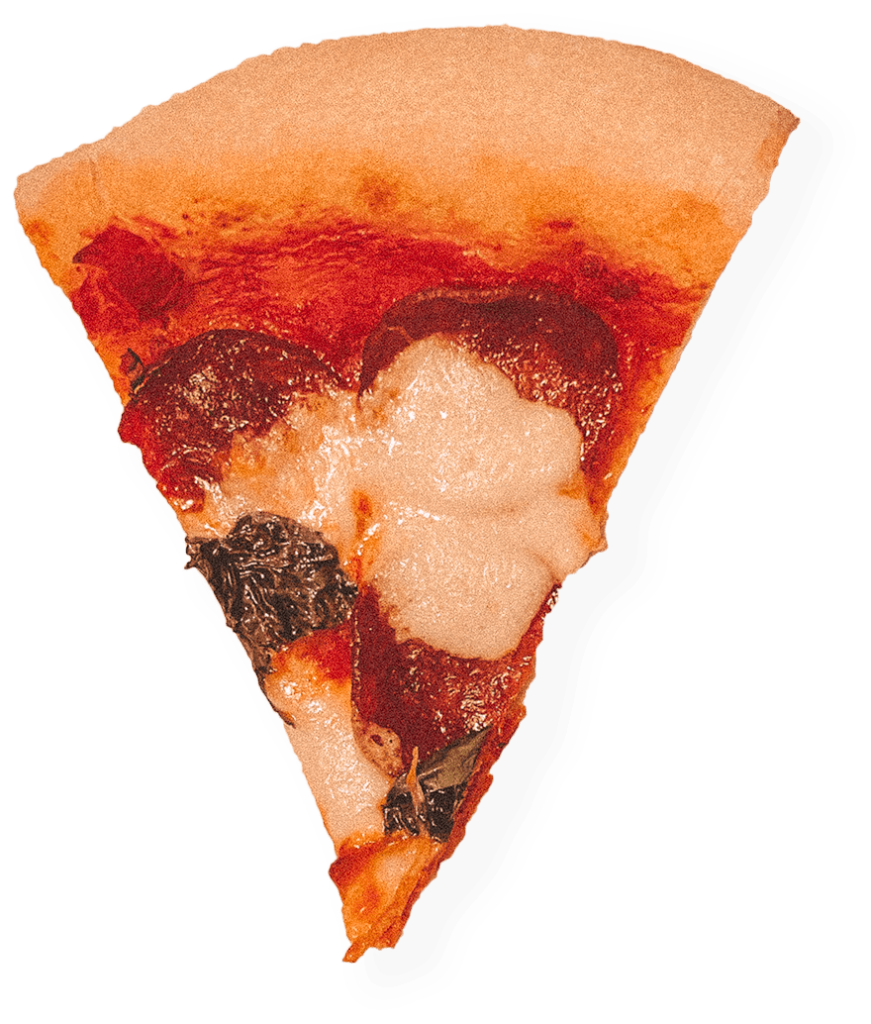
I loved working with this dough and Forkish has the best stretching and dough-shaping techniques I’ve seen. He also makes a great adjustment in the cooking process that I plan to adopt for future Neapolitan style bakes. While, the finished crust has excellent flavor and a nice tender texture, it’s a little denser than I prefer and that kept me from rating it above my favorite Neapolitan-sytle pizza from Brian Lagerstrom.
New Techniques to Make Better Neapolitan Pizza at Home
Ken Forkish based this recipe on the dough made by Enzo Coccia at La Notizia, in Naples, Italy. Forkish modified Coccia’s recipe by reducing the 20-minute-hand mix and adding additional water to up the dough’s hydration from around 60% to 70%. The modifications, like others made in the book, were done to help the dough perform better in home kitchens.*
*Higher hydration helps the pizza from getting dried out during the longer cooking process required by home oven's lower temperature. Less hand mixing makes it more likely a home chef will actually do it :)
I enjoyed this recipe but found the most value in new techniques that will improve my pizza making going forward. I’ve always struggled with getting the nice, smooth and round dough balls that seem an important part of getting a uniform and reasonably round finished pizza. Forkish explains how to do this better than anyone. Essentially, you fold the corners of the divided dough in on themselves until you have a nice, round shape. Then you flip it over, seam side down, on an unfloured area of counter — you want resistance from the counter for next step. Finally, you put your pinkies on the back side of the dough and pull it toward you. The friction from the unfloured counter, pulls the top of the dough down, tightening the ball. You do this on all sides. Forkish has videos for lots of techniques, but not this one. I’ll try to do one as that will make it clearer than my explanation.
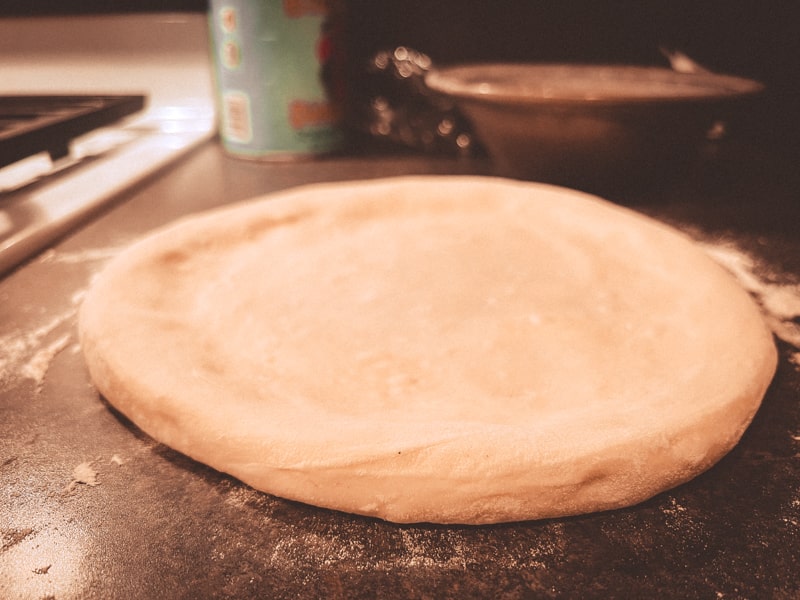
My stretching technique is solid, but Forkish adds one new element that I found very helpful. After you’ve pushed out the dough to the edges a bit, pick up the dough on either side between your thumb and forefingers. Then, let gravity stretch the dough down. Forkish has a video that shows this starting at the 2 minute mark.** However, I did a video of my own for this technique because I feel Forkish’s doesn’t explain it as well as the book. My video is embedded on my how to make pizza at home post.
**If you watch from the beginning, I'm not sure why he crams all the dough balls on to one plate. It requires him to cut them apart. I think separate plates or small, shallow bowls make more sense.
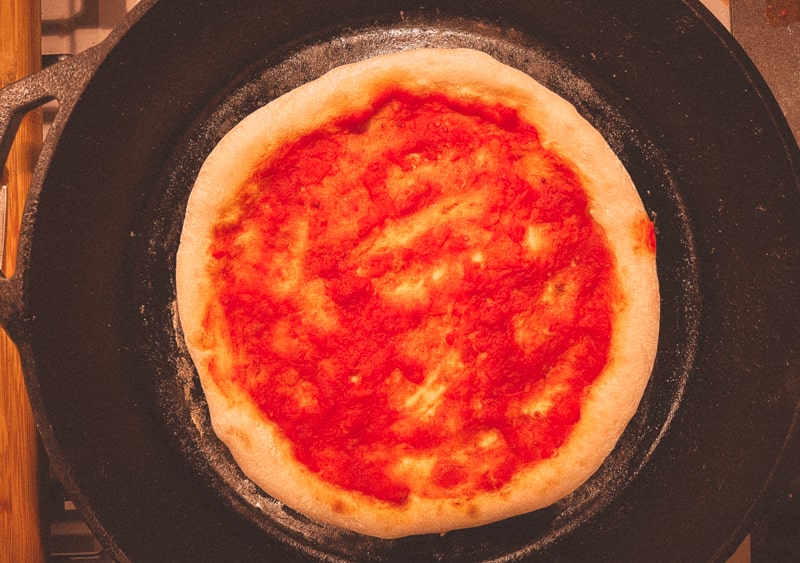
The last new technique I picked up from Forkish is the easiest. Instead of adding the cheese at the beginning, let the pizza bake for 3-5 minutes and then add the cheese. This keeps the fresh mozzarella from getting overcooked. Although, it did reveal an issue with the mozzarella I’m using (see the caption on the next image).
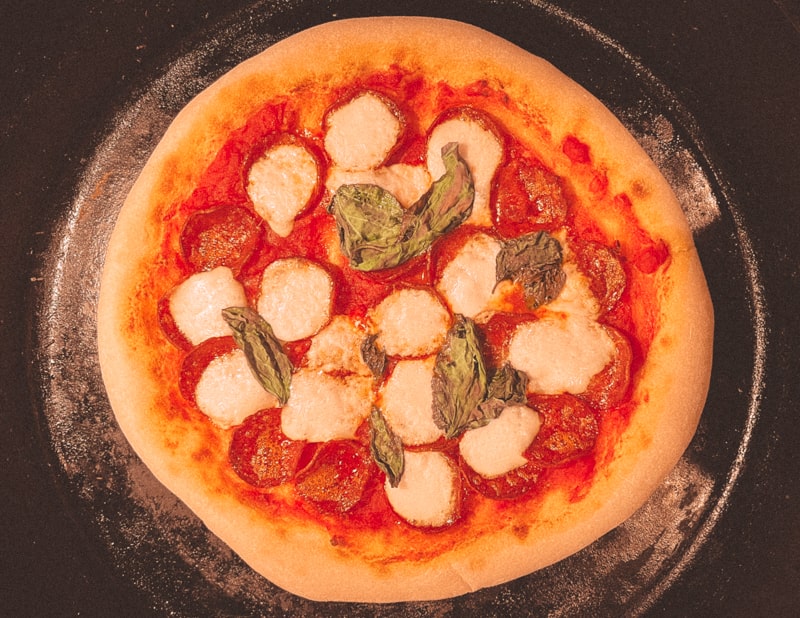
No Dough is Perfect
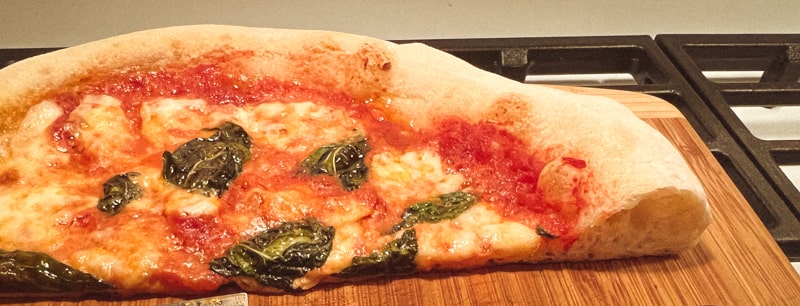
As I mentioned in the intro, this dough turned out a little denser than I prefer. I made my first pizza with a nice, wide rim. I regretted this once I discovered the dough’s density. So, for the remaining pizzas, I went with a smaller rim. I’d suggest going for something around half an inch or so.
Through experimentation, I found the crust’s texture varies a lot based on how long you cook it — true of most doughs I guess. My first pizza, which was slightly underdone and pale, reminded me the most of Neapolitan because it was so tender. I cooked others longer and they got a nice looking crust but also became crisper than Neapolitan should be. My oven is part of the problem. My weak under-oven broiler never gets very hot and doesn’t let me get the pizza very close to the flame — this is probably safer though. To get some color on the crust, I had to cook these for several minutes on stove and then up to 10+ in the broiler.
I also relearned a lesson while making this — if you put basil on before baking, make sure to put some olive oil on too. The oil protects the basil, helping it to crisp up instead of dry out.
One final random note (I really do write these to help myself remember what I did): I had some Taleggio leftover from our weekly cheese and cracker dinner, so I decided to use it to top the last pizza. Pepperoni and Taleggio is a salty, but surprisingly good combo. The Taleggio melts nicely. It’s pretty soft though and smooth — you won’t get any stretchy bits.
This is the first recipe I’ve made from this book. Here’s hoping that the rest are as good as this one. Either way, the techniques and background have already made the book worth it in my opinion.
The Lesson
If you follow Forkish’s dough technique, no one will call your skills weak.
